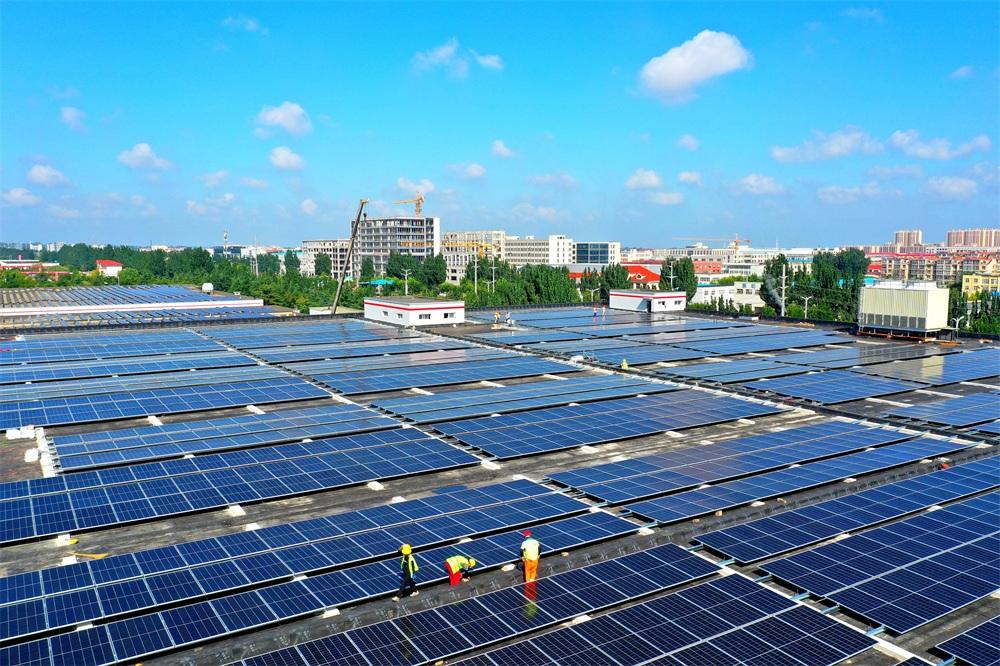
Solar energy is transforming the way we power our world—clean, renewable, and increasingly accessible. One of its most powerful applications is charging LiFePO4 (lithium iron phosphate) batteries, a technology that’s fast becoming the gold standard in energy storage. Whether you're powering an off-grid cabin, a solar generator, or a backup power system, charging LiFePO4 batteries with solar power offers unmatched reliability and sustainability.
This article breaks down everything you need to know—from how it works, to what components you need, to expert best practices—so you can confidently set up your own solar charging system for LiFePO4 batteries.
LiFePO4 batteries are a type of lithium-ion battery known for their superior safety, longer cycle life, and better thermal and chemical stability compared to other lithium chemistries. They’ve become a favorite for solar storage due to several standout benefits:
High energy density with minimal degradation over time
Longer lifespan—often over 2000–5000 cycles
Stable voltage profile, perfect for renewable energy systems
Lightweight and maintenance-free, ideal for mobile or off-grid use
When paired with solar power, the result is a clean, cost-effective, and high-performance energy solution.
Using the sun to charge your batteries eliminates reliance on fossil fuels and reduces your carbon footprint.
After the initial setup, solar energy is free. Combined with LiFePO4’s efficiency and longevity, the cost-per-use is remarkably low.
Solar-charged LiFePO4 systems provide true off-grid capability, essential for remote areas, RVs, boats, and emergency backup systems.
Solar charging, especially when properly managed through a LiFePO4-compatible charge controller, ensures steady, gentle charging that protects the battery's health.
Before diving into your setup, keep the following in mind to maximize both safety and efficiency:
Choose solar panels with sufficient wattage and voltage output that matches your battery bank. Underpowered panels lead to slow charging; overpowered systems risk damage without the proper controller.
Never skip this. A MPPT (Maximum Power Point Tracking) controller is ideal, offering higher efficiency and full compatibility with LiFePO4 charging profiles.
Match your battery storage to your actual energy needs. Will you run lights, appliances, or large tools? This determines the total amp-hour (Ah) capacity needed and whether you wire in series or parallel.
Pay attention to wiring, controller ratings, and solar panel efficiency. Poor quality or mismatched components can lead to energy losses and underperformance.
List all devices you’ll power and how many hours a day they run. Multiply wattage by hours to get daily watt-hours. This figure determines both battery size and solar panel capacity.
Divide your total daily watt-hours by the average sunlight hours per day in your location. This tells you the minimum wattage your solar panel array should produce.
Example: If you need 1,200Wh/day and get 5 hours of sun, you’ll need at least 240W of solar panel output.
Select an MPPT or PWM controller rated for your panel’s voltage and your battery’s chemistry. Look for features like:
Overcharge protection
Low voltage disconnect
Temperature compensation (optional but helpful)
Wire the solar panels to the input side of the charge controller. Ensure correct polarity and use proper gauge wires to handle the current without overheating.
Now wire your LiFePO4 batteries to the output side of the charge controller. Double-check polarity (reversed connections can damage equipment) and secure all terminals.
Most modern controllers have LCD screens or Bluetooth apps to monitor voltage, charging current, and battery status. Keep an eye out for errors or unusual behavior.
Clean solar panels regularly to maintain performance
Periodically inspect wiring and connectors
Monitor voltage and state of charge to avoid over-discharge
LiFePO4 batteries can be damaged by overvoltage. Always use a smart charge controller that stops charging at the proper cut-off voltage.
Stick to the manufacturer’s recommended rates (typically 0.2C to 1C). Charging too fast can degrade the battery faster.
LiFePO4 performs best between 0°C to 45°C when charging. If your setup is outdoors or in cold areas, use a battery heater or low-temp disconnect feature.
Check terminal connections
Inspect for corrosion
Keep cables tidy and secure
Update controller firmware if applicable
Q: Can I use any solar panel with a LiFePO4 battery?
A: Yes, but the panel’s output must match the voltage and current requirements of your charge controller and battery. Always verify compatibility.
Q: How long does it take to charge a LiFePO4 battery with solar?
A: Charging time depends on battery size, panel wattage, and sunlight availability. A 100Ah battery may take 4–8 hours to charge under ideal sunlight with a 300W panel.
Q: Can I mix different battery types in a solar system?
A: No. Mixing chemistries (like LiFePO4 and AGM) is unsafe and leads to performance issues. Stick to one chemistry per system.
Q: Is it safe to leave the system running 24/7?
A: Yes, as long as the system includes a proper charge controller with built-in protections.
Q: Are LiFePO4 batteries good for off-grid solar systems?
A: Absolutely. Their long lifespan, deep discharge ability, and minimal maintenance make them ideal for off-grid and backup power applications.
Charging LiFePO4 batteries with solar power is one of the most efficient, eco-friendly, and future-ready energy solutions available today. With the right planning and components, your solar charging system can deliver clean power for years—whether you’re living off-grid, preparing for emergencies, or simply reducing your energy bills.
Set it up right the first time, follow best practices, and enjoy the freedom of solar-powered energy storage without compromise.
Next:CATL & BHP Partner: Electrifying Mining for Net Zero Future | Collaboration
Previous:Why Sodium-Ion Batteries Are the Future of Energy Storage
Contact Person: Miss. Elsa Liu
| WhatsApp : | +8617763274209 |
|---|---|
| Skype : | +8617763274209 |
| WeChat : | 17763274209 |
| Email : | Elsa@lifepo4-battery.com |